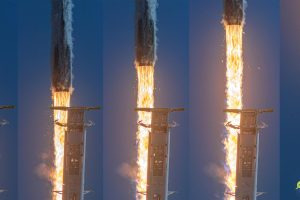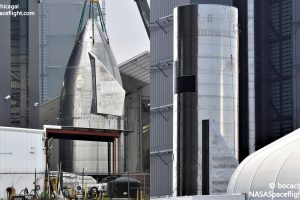- 🌐 SpaceX has revealed its first-ever Extravehicular Activity (EVA) suits for spacewalks during the upcoming Polaris Dawn mission.
- 🚀 The Polaris Dawn mission will feature the first commercial astronaut crew to conduct a spacewalk.
- 👨🚀 The four Polaris Dawn astronauts will conduct the furthest human spacewalk since the last Hubble Space Telescope maintenance mission.
- 🔭 This will also be the first time in history that all four crew members are exposed to the vacuum of space simultaneously during a spacewalk.
- 🛰️ The mission will test using Starlink satellites for communication and data relays for crews in space.
- 👩🚀 The EVA suits incorporate materials from Falcon 9 and Dragon, and feature new visors and heads-up displays.
As the race to conquer the final frontier intensifies, SpaceX continues to push boundaries and redefine what’s possible in space exploration. In a groundbreaking move, the company has unveiled its first-ever Extravehicular Activity (EVA) suits, designed specifically for the upcoming Polaris Dawn mission. These innovative suits are set to revolutionize the way we approach spacewalks, paving the way for a new era of commercial space endeavors.
The Polaris Dawn Mission: A Historic Milestone
The Polaris Dawn mission, scheduled for later this summer, will mark a significant milestone in the history of space exploration. For the first time ever, a commercial astronaut crew will conduct a spacewalk, venturing outside their spacecraft to experience the awe-inspiring vastness of space firsthand.
The Farthest Humans Have Traveled in Decades
What makes this mission even more remarkable is the unprecedented distance the Polaris Dawn astronauts will travel. They will embark on the furthest human spacewalk since the last time a Space Shuttle crew conducted maintenance on the iconic Hubble Space Telescope. This extraordinary feat will push the boundaries of human endurance and exploration like never before.
A Groundbreaking First: Four Astronauts in the Vacuum of Space
In another historic first, all four members of the Polaris Dawn crew will be exposed to the vacuum of space simultaneously during their spacewalk. This unprecedented event will not only test the limits of human capability but also serve as a testament to the incredible advancements in space technology and safety protocols.
Starlink: Revolutionizing Space Communications
The Polaris Dawn mission will also test the capabilities of Starlink, SpaceX’s cutting-edge satellite internet service. For the first time, a crew in space will utilize Starlink for communications and data relays. This groundbreaking experiment could pave the way for future missions, where Starlink satellites could provide vital communication links for crews on the Moon and beyond.
The SpaceX EVA Suit: A Marvel of Engineering
To ensure the safety and success of this historic mission, SpaceX has designed a state-of-the-art EVA suit that incorporates materials from the Falcon 9 interstage and Dragon’s trunk. These suits feature several innovative features, including:
- Glare-Reducing Visors: Specially designed visors will reduce glare during spacewalks, ensuring optimal visibility for the astronauts.
- Heads-Up Display: Vital information, such as temperatures and pressures, will be displayed on a heads-up display, keeping the astronauts informed and aware at all times.
- Thermal Management Textiles: Cutting-edge textiles will help regulate the astronauts’ body temperatures, ensuring their comfort and safety during the demanding spacewalk.
A Glimpse into the Future of Space Exploration
The Polaris Dawn mission and the development of SpaceX’s EVA suits represent a significant step forward in the pursuit of commercial space exploration. As we inch closer to realizing dreams of establishing a permanent human presence on the Moon and, eventually, Mars, these advancements will prove invaluable.
SpaceX’s commitment to pushing boundaries and embracing innovation has once again been exemplified through this remarkable achievement. As we eagerly await the launch of the Polaris Dawn mission, one thing is certain: the future of space exploration has never looked brighter.





